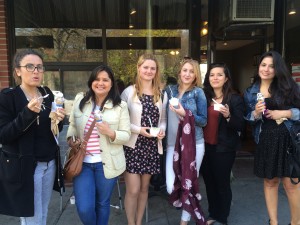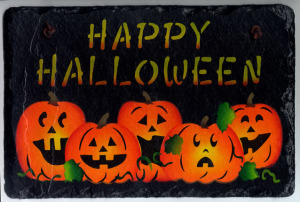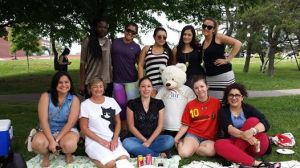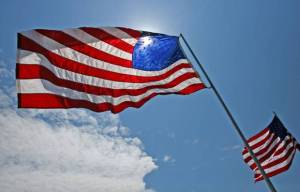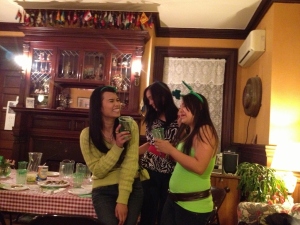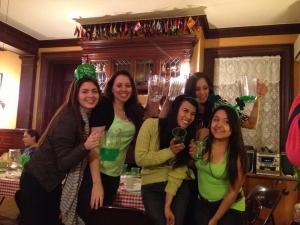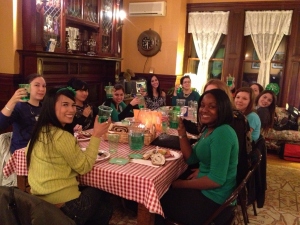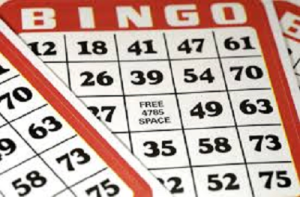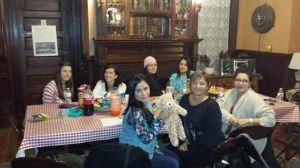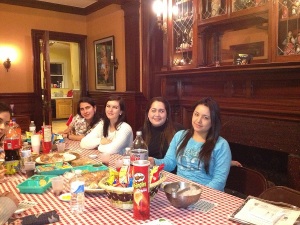Valentine’s Day, celebrated on February 14, dates back to ancient Rome. Sending a valentine in the United States is not a serious declaration of love as in some other countries. Children usually send valentines to the other children in their class and to their teacher. Friends and relatives exchange valentines. For that we can thank Esther Howland, a young woman from Massachusetts, who in 1848 started the first mass production of valentines. Now valentine cards and candy are a fun way of keeping in touch with those we care about.
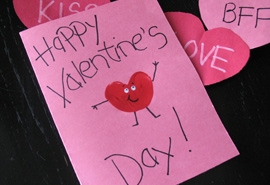
Make your own valentines: Although many store-bought valentines are designed for children, come in large packs and are quite inexpensive, it is lots of fun to make your own. Pink, red and white paper, crayons or markers and a little bit of imagination are all you need. Dress up the cards with glitter, doilies, lace, stickers, or feathers if you wish.
Valentine Collage (ages 18 months and older): Prepare hearts of different colors and sizes, ribbon, feathers, etc. Older children can use glue on paper. For younger children tape a piece of contact paper sticky side up securely onto a table. Paper shapes will stick easily to the contact paper.
Picture Frame Card (ages 3 years and older): Take a picture of the child and cut a piece of construction paper to make a picture frame. Have the child decorate the frame. Use this as the front of a card, or to stand by itself.
Heart rubbings (ages 3 years and older): First cut hearts of different sizes from heavy paper. Place those hearts under a blank piece of paper and rub over the shapes using the side of a crayon. The hearts will magically appear.
Sewing Heart (ages 3 years and older): Cut a heart shape from light-weight cardboard about 8 inches across. Use a hole punch to make holes all around the edges about 1 inch apart. Give the child yarn or ribbon to lace through the holes. Tie the ends into a bow.
Heart caterpillars (ages 3 years and older): Cut many heart shapes out of colored paper and have the child glue them down on a sheet of paper to look like a caterpillar. Use tiny hearts for eyes and at the end of antennas.
Edible Valentines (ages 3 years and up): Graham crackers, cake frosting and conversation heart candies make the most delicious valentines!
Heart wreath (ages 4 years and up): Cut out the middle of a paper plate. Arrange colored heart shapes, flowers, ribbon, etc. around the edges.
Valentine Puzzles (ages 4 years and up): Cut different-sized hearts down the middle with a jagged line. Children can match the sides of the hearts.
Heart mosaic (ages 5 years and up): Cut small pieces of paper, or use crushed eggshell dyed with food coloring. Arrange in a heart shape.
Heart people (ages 5 years and up): Use a large heart for the body and smaller hearts for eyes, hands and feet. Take long strips of paper and fold them back and forth like an accordion for the arms and legs. Glue them to the sides and bottom of the body.
Valentine’s Day Post Office (ages 5 years and up): Set up your own post office at home. Decorate mailboxes for every member of the family. Use a rubber stamp to show that the valentines have been properly mailed. Deliver to the boxes.




